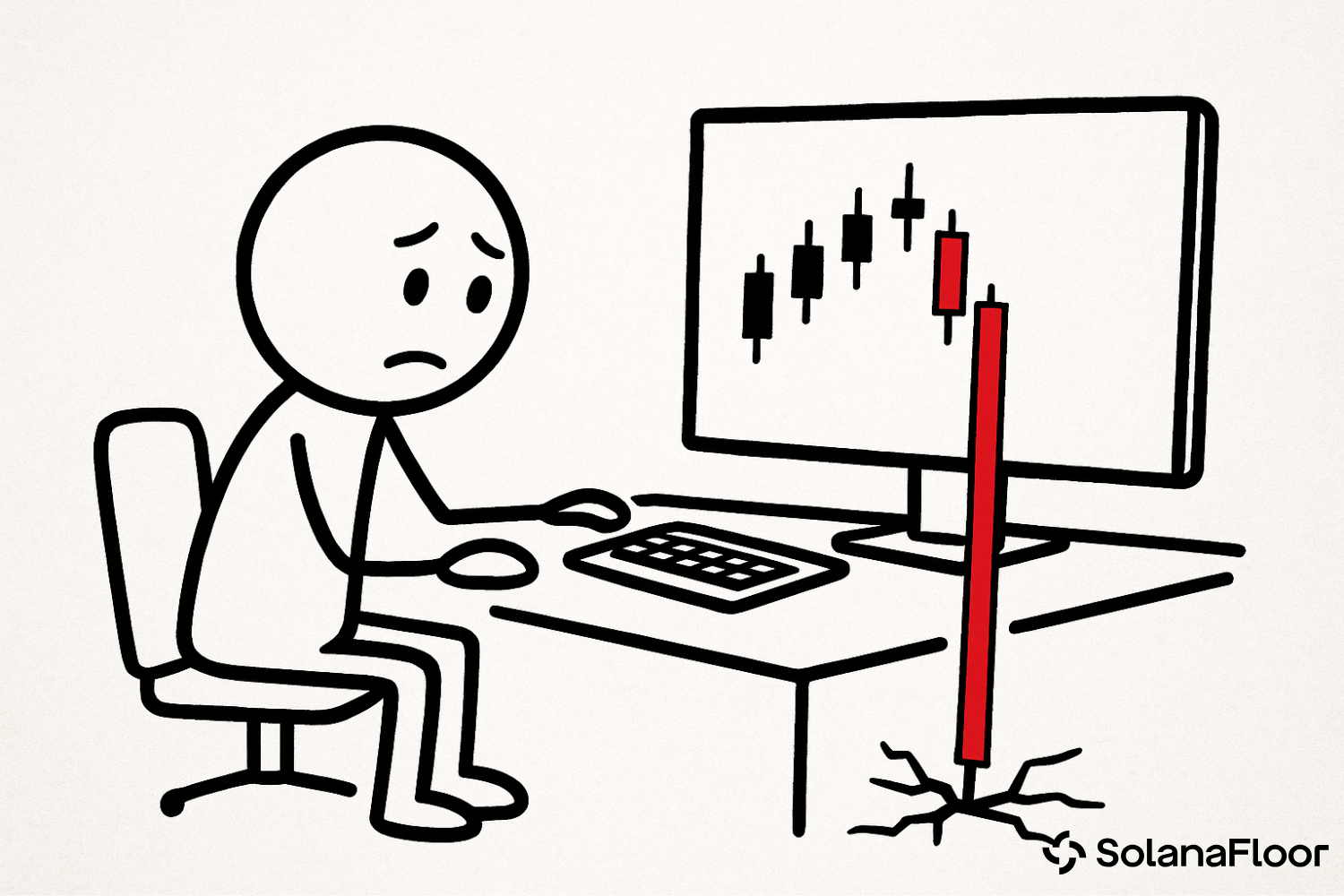
If you decided to take a break from the crypto markets on Friday, you would be in for a real shocker the next time you checked on your portfolio. Global cryptocurrency markets experienced unprecedented volatility on Friday, October 10, as more than $19 billion worth of leveraged positions were liquidated within 12 hours. According to CoinGlass, this was “the largest liquidation event in crypto history”, wiping out over 1.6 million traders. Considering unreported liquidations across major exchanges, the actual total may have reached between $30 billion and $40 billion.
The market chaos followed remarks from U.S. President Donald Trump threatening new tariffs on Chinese imports. Trump announced his intent to impose 100% tariffs in response to China’s restrictions on rare earth materials. The announcement triggered a risk-off reaction across global markets, pushing investors to shed riskier assets, including cryptocurrencies.
The Scale of the Liquidations
CoinGlass data shows that liquidations exceeded $19 billion in 24 hours, with most positions on the long side. The decentralized perpetuals exchange Hyperliquid recorded more than $10 billion in liquidations, while Bybit saw $4.5 billion and Binance $2.5 billion. Solana-based positions also contributed significantly, with over $400 million liquidated onchain and a total of $2 billion across 12 hours.
Hundreds of altcoins lost over 90% of their value during the crash. The total cryptocurrency market capitalization fell by over $450 billion, dropping from $4.24 trillion to $3.79 trillion between Friday and Sunday. As of today, Monday, 13 October, prices have partially recovered, with total market capitalization climbing back above $4 trillion, according to CoinGecko data.
Bitcoin’s price plunged as low as $104,000 before rebounding to around $114,500 at the time of writing. Ether dropped below $3,700, but is now trading above $4,100. The majority of liquidations occurred on the long side, as traders betting on continued price gains were caught off guard by the sudden downturn.
Solana’s Network Holds Strong Under Pressure
While centralized exchanges struggled to process the unprecedented volumes, Solana’s blockchain demonstrated notable resilience during the event. The network handled record transaction loads, reaching 6,000 to 10,000 transactions per second, according to validator data.
Developers at Anza, a Solana core contributor, stated that the network achieved a record throughput of 100,000 transactions per second at its peak. Despite the strain, the network remained stable throughout the volatility. In contrast, Ethereum layer 2 networks mirrored mainnet congestion patterns, with Arbitrum gas fees briefly reaching $100 per transaction.
Decentralized exchanges on Solana also recorded unprecedented trading activity. Over $8 billion in trading volume flowed through Solana-based DEXs, led by Orca at $2.49 billion. Four Solana DEXs crossed the $1 billion mark in 24-hour volume. Perpetual DEXs on the network processed $4.49 billion in total, with Jupiter Exchange accounting for $2.34 billion as traders rushed to adjust positions.
Market Sentiment Plummets
The sell-off sharply impacted investor sentiment. Alternative.me’s Crypto Fear & Greed Index fell from 64 (“Greed”) to 27 (“Fear”) in less than 24 hours, a reflection of the shock and uncertainty that gripped the market following Trump’s tariff announcement.
The ongoing U.S. government shutdown compounded the uncertainty by delaying key economic data releases. With no official indicators, traders had little macroeconomic guidance, intensifying the panic. The combined effect of political tension, missing data, and overleveraged positions created a perfect storm for liquidation.
Crying in the Casino? - Exchange Dynamics
CoinGlass noted that the $19 billion figure likely underestimates the actual total, citing Binance’s reporting limitations. The exchange records only one liquidation order per second, meaning that during periods of extreme volatility, many liquidations go uncounted in real time.
The combination of decentralized and centralized exchange data paints a picture of massive systemic stress across the crypto trading ecosystem. Hyperliquid’s over $10 billion in liquidations accounted for more than half of the global total. The platform, known for its large share of perpetual derivatives trading, saw $9.3 billion of those positions on the long side.
Bybit and Binance, two of the most active derivatives exchanges, also recorded multibillion-dollar liquidations. Traders on both platforms faced delays and high volatility, with reports of slippage and forced closures even before liquidation thresholds were technically breached.
Political Context and Industry Response
President Trump’s relationship with the cryptocurrency industry adds another dimension to the event. Nearly ten months into his second term, Trump has become a vocal supporter of digital assets, both politically and personally. His administration has rolled back several regulatory measures introduced under former President Biden and supported legislation for stablecoin regulation and market structure reforms.
Despite this favorable stance, Friday’s liquidation event shows that the crypto market remains vulnerable to geopolitical and policy shifts. Commentators were quick to emphasize that crypto’s volatility mirrors broader economic conditions and that market reactions to political developments are now inevitable as the sector becomes more mainstream.
In statements posted on social media, several major exchanges and DeFi platforms assured users that systems remained operational throughout the event. Binance, Bybit, and Hyperliquid each confirmed that no technical outages occurred, although they acknowledged high latency and elevated order processing times.
Time to Make It All Back?
Commentators remain divided on whether the crash signals the start of a broader market downturn or a short-term correction. Some argue that the market had become overheated, with excessive leverage across both centralized and decentralized exchanges. The liquidation, in their view, served as a necessary reset for healthier market conditions.
Others warn that the scale of the event could erode confidence and trigger a prolonged risk-off period.
Much will depend on macroeconomic developments in the coming weeks, including any further escalation of U.S.-China trade tensions and the eventual release of delayed economic indicators from Washington.
As of the time of writing, trading volumes remained elevated, but prices have stabilized across major assets. Bitcoin recovered above $114,000, and the total crypto market cap regained the $4 trillion level. However, with over 1.6 million traders wiped out in 24 hours, the psychological impact may linger.
Whether this marks the beginning of a new phase of volatility or a short-lived correction, Friday’s events will likely shape how traders, exchanges, and regulators view risk in the months ahead. For now, the numbers speak for themselves: over $19 billion in liquidations, 1.6 million traders affected, and a reminder that in crypto, stability can be as fleeting as a single post.
Read More on SolanaFloor
Axiom Exchange Becomes the Fastest Crypto Platform to Reach $300 Million in Revenue
Solana Launchpad Activity Falls 73% as Four.meme Rises on BNB
Watch Bloomberg’s James Seyffart Talk About Solana ETFs



